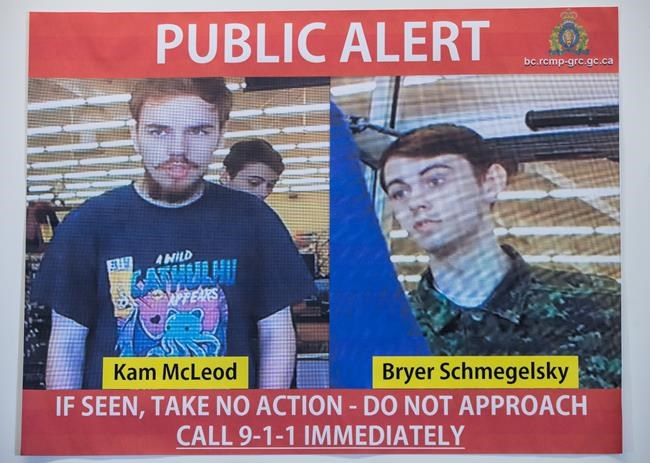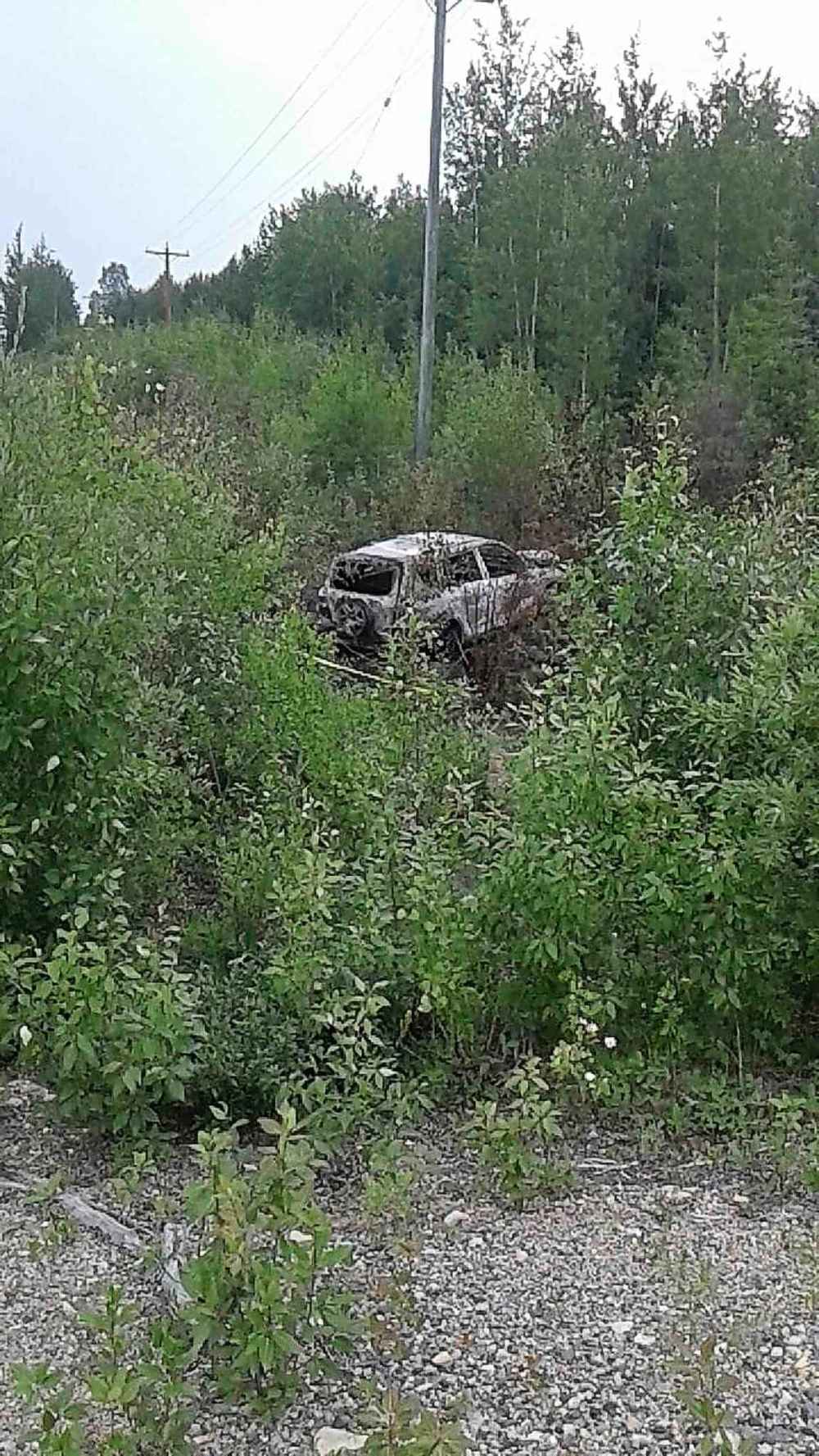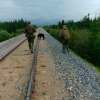Veteran manhunter says dogs best bet to find fugitives
Read this article for free:
or
Already have an account? Log in here »
To continue reading, please subscribe:
Monthly Digital Subscription
$0 for the first 4 weeks*
- Enjoy unlimited reading on winnipegfreepress.com
- Read the E-Edition, our digital replica newspaper
- Access News Break, our award-winning app
- Play interactive puzzles
*No charge for 4 weeks then price increases to the regular rate of $19.00 plus GST every four weeks. Offer available to new and qualified returning subscribers only. Cancel any time.
Monthly Digital Subscription
$4.75/week*
- Enjoy unlimited reading on winnipegfreepress.com
- Read the E-Edition, our digital replica newspaper
- Access News Break, our award-winning app
- Play interactive puzzles
*Billed as $19 plus GST every four weeks. Cancel any time.
To continue reading, please subscribe:
Add Free Press access to your Brandon Sun subscription for only an additional
$1 for the first 4 weeks*
*Your next subscription payment will increase by $1.00 and you will be charged $16.99 plus GST for four weeks. After four weeks, your payment will increase to $23.99 plus GST every four weeks.
Read unlimited articles for free today:
or
Already have an account? Log in here »
Hey there, time traveller!
This article was published 25/07/2019 (2329 days ago), so information in it may no longer be current.
There have been 80 tips to RCMP in the past two days. There have been two confirmed sightings.
But, despite a state of high alert in Manitoba, two accused killers remain at large, thought to be in the vast, boggy bush surrounding Gillam area.

“There’s tips coming in all the time,” RCMP Cpl. Julie Courchaine said at a press conference in Winnipeg Thursday. She said there were two separate sightings of Kam McLeod, 19, and Bryer Schmegelsky, 19, most recently on Monday before the burned-out vehicle they were driving was discovered near Gillam. The pair are on the run from B.C., where they were charged with the second-degree murder of one man, and are suspects in the deaths of a couple.
As the search continues, a retired criminal justice expert who led manhunts across the U.S. has ideas about how police in Manitoba might find them.
New York City-born manhunter John Moriarty was a chief of operations at the Texas Department of Criminal Justice and responsible for all of the fugitive task force operations and joint task force operations with the U.S. Marshals Service, FBI, and the Secret Service. He led the team that eventually captured the “Texas Seven” inmates who escaped in 2000 from a maximum security prison in Texas before being captured in Colorado six weeks later.
“Texas is very good at hunting people on the ground,” said Moriarty, who started his own consulting firm and helps police departments across the U.S. track fugitives. A big reason is its use of pack dogs.
“Dogs are critical in ground searches,” said Moriarty. In large, unpopulated areas, police officers set up a human perimeter and then let “a train” of pack dogs “drag” the area.
“They’re specifically trained to hunt human scent of any kind,” he said. “It’s not like in the movies with a blood hound.” He said multiple packs of dogs take turns in the search for as long as it takes to capture the fugitives. And they’re successful in all kinds of terrain.
“I’ve had them in swamps — they’re pretty amazing,” he said. They’ve been transported out of state to assist police departments, Moriarty said, pointing to one search in Pennsylvania where as many as four dog packs — made up of six to eight dogs per pack — tracked a dangerous offender.
“You can hear them coming,” he said of the dogs. “They sweep an area — it’s kind of like a fox hunt.”

When they find a human, they’ll bite him if he doesn’t stop. “If the guy puts up his hands, they won’t bother him,” Moriarty said.
“The big thing is to secure that perimeter and make sure they don’t get out of the perimeter. We’ve had perimeters up for weeks at a time,” he said. That involves a lot of resources, said Moriarty.
Right now, RCMP has said they’re controlling the only road in and out of Gillam, which is about 1,000 kilometers north of Winnipeg, and will have an informational check-stop at the intersection of PR 280 and PR 290 “for the foreseeable future.”
The teens were charged Wednesday evening with second-degree murder in the death of Leonard Dyck, whose body was found July 19 on a B.C. highway pullout about two kilometres from a burned-out truck and camper. The pair are also suspects in the deaths of Australian Lucas Fowler and his American girlfriend Chynna Deese, whose bodies were found along the side of a highway in northeastern B.C. on July 15.
At the Winnipeg press conference, Courchaine wouldn’t say what technology the RCMP are using. She cited “significant” resources, including emergency response and crisis negotiation team members, police dogs, “air services assets,” and RCMP help from other provinces and the Ontario Provincial Police.
“At this point in the investigation we believe they’re still in the area.” That’s because there have been no reports of any stolen vehicles they might have used, said Courchaine. She wouldn’t say how many officers or police dogs are involved or how big of an area they’re searching.
Panic spreads across Manitoba
Public fear about two accused killers on the loose in Manitoba sent social media in one small town, which is far from the search area, into a frenzy Thursday.
Several Facebook posts in Beausejour — 1,100 kilometres from Gillam where RCMP are conducting a manhunt for the alleged killers from B.C. — said businesses in town were going into “lockdown” for security reasons.
At the town office, Vee Scromeda, Beausejour’s chief administrative officer, wasn’t aware of any businesses going into lockdown or social media posts to that effect. She wasn’t totally surprised by them, either.
“Someone posts something on Facebook and people panic,” Scromeda said.
But Moriarty, who uses two large drones for work, expects the RCMP would be using thermal imaging equipment on drones, which have limited range, and helicopters. The heat-sensing technology can find warm-blooded humans who are lost or hiding. “It’s hard if they’re in a heavily wooded area — you’ve got to move slow.”
Moriarty said it’s possible — and the RCMP’s Courchaine confirmed — that the two alleged killers could have left the area before the police moved in.

“You don’t know where they are,” said Moriarty. The public and the police need to remain vigilant and RCMP need to keep searching and controlling the area until the pair is caught, he said.
“You’ve got to have everybody on high alert for burglaries,” and people with security and game cameras checking them regularly. Fugitives wanted for murder are desperate and have nothing to lose.
“They’ll carjack people, kill them and dump their bodies by the side of the road,” he said. “You’ve got to be cautious.”
carol.sanders@freepress.mb.ca

Our newsroom depends on a growing audience of readers to power our journalism. If you are not a paid reader, please consider becoming a subscriber.
Our newsroom depends on its audience of readers to power our journalism. Thank you for your support.
















